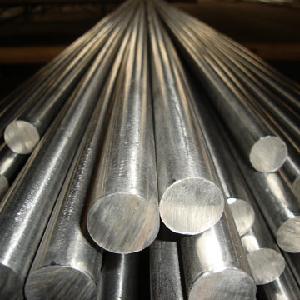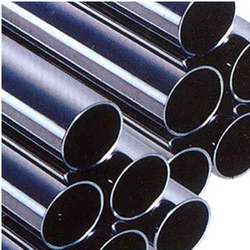SX 316 / 316L Technical Data
Summary
SX 316 is an improved version of SX 304, with the addition of molybdenum and a slightly higher nickel content. The resultant composition of SX 316 gives the steel much increased corrosion resistance in many aggressive environments. The molybdenum makes the steel more resistant to pitting and crevice corrosion in chloride-contaminated media, sea water and acetic acid vapours. The lower rate of general corrosion in mildly corrosive environments gives the steel good atmospheric corrosion resistance in polluted marine atmospheres.
SX 316 offers higher strength and better creep resistance at higher temperatures than SX 304. SX 316 also possesses excellent mechanical and corrosion properties at sub-zero temperatures. When there is a danger of corrosion in the heat-affected zones of weldments, the low-carbon variety SX 316L should be used. SX 316 Ti, the titanium-stabilised version, is used for its resistance to sensitization during prolonged exposure in the 550oC-800oC temperature range.
Typical Applications
Because of its superior corrosion and oxidation resistance, good mechanical properties and fabricability, SX 316 has applications in many sectors of industry. Some of these include:
Tanks and storage vessels for corrosive liquids.
Specialised process equipment in the chemical, food, paper, mining, pharmaceutical and petroleum industries.
Architectural applications in highly corrosive environments.
Chemical Composition (ASTM A 240)
| C | Mn | P | S | Si | Cr | Ni | Mo | Ti |
SX316
SX316L
SX316Ti | 0.08 max
0.03 max
0.08 max | 2.0
max | 0.045
max | 0.030
max | 1.0
max | 16.0
to
18.0 | 10.0
to
14.0 | 2.00
to
3.00 | -
0.5 max
5X%C |
Typical properties in the annealed condition
The properties quoted in this publication are typical of mill products and unless indicated must not be regarded as guaranteed minimum values for specification purposes.
1. Mechanical properties at room temperature
| SX316 | SX316L | SX316Ti |
| Typical | Minimum | Typical | Minimum | Typical | Minimum |
| Tensile Strength, MPa | 580 | 515 | 570 | 485 | 600 | 515 |
| Proof Stress (0.2 % offset), MPa | 310 | 205 | 300 | 170 | 320 | 205 |
| Elongation (Percent in L = 5.65 So) | 55 | 40 | 60 | 40 | 50 | 40 |
| Hardness (Brinell) | 165 | - | 165 | - | 165 | - |
| Erichsen Cup Test Value mm | 8 - 10 | - | 10 - 11 | - | - | - |
| Endurance (fatigue) limit, MPa | 260 | - | 260 | - | 260 | - |
2. Properties at elevated temperatures
The values given refer to SX 316 and SX 316 Ti only as strength values for SX 316L fall rapidly above 425oC.
Short Time Elevated Temperature Tensile Strength
| Temperature, C | 600 | 700 | 800 | 900 | 1000 |
| Strength, MPa | 460 | 320 | 190 | 120 | 70 |
Creep data
Stress for a creep rate of 1% in 10 000 h
| Temperature, oC | 550 | 600 | 650 | 700 | 800 |
| Stress, MPa | 160 | 120 | 90 | 60 | 20 |
Recommended Maximum Service Temperature
(Oxidising conditions)
Continuous Service 925oC
Intermittent Service 870oC
3. Properties at Sub-Zero Temperatures
( SX 316 )
| Temperature | oC | -78 | -161 | -196 |
| Proof Strength (0.2% Offset) | MPa | 400 | 460 | 580 |
| Tensile Strength | MPa | 820 | 1150 | 1300 |
| Impact Strength (Charpy V-Notch) | J | 180 | 165 | 155 |
4. Corrosion Resistance
4.1 Aqueous
For specific conditions, consult VRN technical staff. As a rough guide, the following examples are given
for pure acid-water mixtures.
| TemperatureoC | 20 | 80 |
| Concentration, (-% by mass) | 10 20 40 60 80 100 | 10 20 40 60 80 100 |
| Sulphuric Acid | 0 1 2 2 1 0 | 2 2 2 2 2 2 |
| Nitric Acid | 0 0 0 0 0 1 | 0 0 0 0 1 2 |
| Phosphoric Acid | 0 0 0 0 1 2 | 0 0 0 0 1 2 |
| Formic Acid | 0 0 0 1 1 0 | 0 0 1 1 1 0 |
Key: 0 = resistant - corrosion rate less than 100 mm/year
1 = partly resistant - corrosion rate 100 m to 1000 mm/year
2 = non resistant - corrosion rate more than 1000 mm/year
4.2 Atmospheric
The performance of SX 316 compared with other metals in various environments is shown in the
following table. Corrosion rate is based on a 5 year exposure.
| Environment | Corrosion Rate (mm/year) |
| SX 316 | Aluminium-3S | Mild Steel |
| Rural | 0.0025 | 0.025 | 5.8 |
| Marine | 0.0076 | 0.432 | 34.0 |
| Marine-Industrial | 0.0051 | 0.686 | 46.2 |
Note: For corrosion resistance of SX 316 relative to other types, see the section in Comparative Data.
4.3 Thermal Processing
4.3.1 Annealing. Heat from 1 010oC to 1 120oC and cool rapidly in air or water. The best corrosion
resistance is obtained when the final annealing temperature is above 1 070oC.
4.3.2 Stress relieving. Heat from 200 - 400oC and air cool.
4.3.3 Hot working
Initial forging and pressing: 1150 - 1200oC
Finishing temperature: above 900oC
For upsetting operations, forgings
should be finished between: 930 and 980oC
All hot working operations should be followed by annealing.
Note: Soaking times to ensure uniformity of temperature are up to 12 times that required for the same thickness of mild steel.
Cold Working
SX 316 / 316L, being extremely tough and ductile, can be readily fabricated by cold working. Typical operations include bending, forming, deep drawing and upsetting.
Source: www.fanagalo.co.za









